Water Class 2 Notes EVS
| Table of contents |

|
| Introduction |

|
| Sources of Water |

|
| Clean Drinking Water |

|
| Save Water |

|
Introduction
Water is very important for all of us. Can you imagine a day without water? We use water every day for drinking, bathing, cooking, and even for watering plants in the garden. Just like us, animals and plants also need water to live and grow. 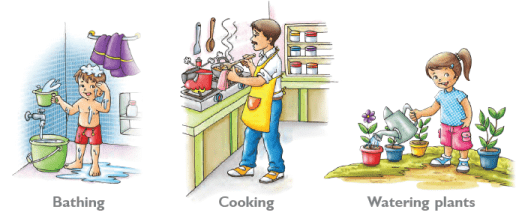
Let’s learn more about where water comes from, how we can keep it clean, and why it’s so important to save it!
Sources of Water
Rain is the main source of water on the earth. The rainwater fills up the ponds, lakes, rivers and oceans. These are called the waterbodies. These waterbodies give us surface water.
Some of this water also seeps deep into the ground. This is called groundwater. We get the groundwater by digging a well, handpump or a tube well.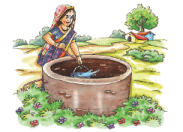 A well
A well
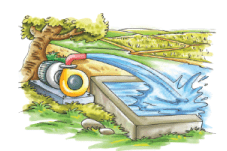 A tube well
A tube well
The water that we get directly from these sources is not clean. It has impurities like dirt, sand and germs. This water is first purified and then used. In towns and cities, it is supplied into our homes through taps.
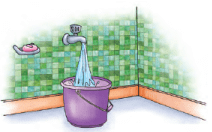 A tap
A tap
Clean Drinking Water
The water that reaches our home looks clean. However, it still needs to be made safe for drinking. This can be done either by boiling the water or by filtering it. Boiling kills the germs present in the water. It can also be purified using water filters and water purifiers. Clean drinking water is called potable water. This water is tasteless, colourless, odourless and germ free.
If we drink unclean water, we may suffer from diseases like jaundice, cholera and typhoid.
Storing Water
At home, we store water in containers like the pot, bucket, tub and overhead tank.
Save Water
The water available for our use is limited. So, we should not waste water. Given below are some tips to save water.

Another good way to save water is through rainwater harvesting. Rainwater is collected in big tanks with the help of pipes. It is then filtered, purified and stored. This water can then be used when needed. Nowadays, many houses, schools and factories store water in this way.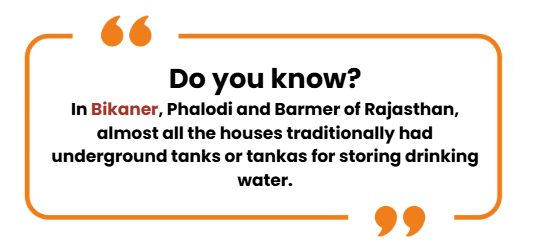
|
30 videos|304 docs|48 tests
|
FAQs on Water Class 2 Notes EVS
| 1. What are the main sources of water pollution? |  |
| 2. How does water pollution affect human health? |  |
| 3. What are the consequences of water scarcity? |  |
| 4. How can individuals contribute to water conservation? |  |
| 5. What are some methods of water purification? |  |




















